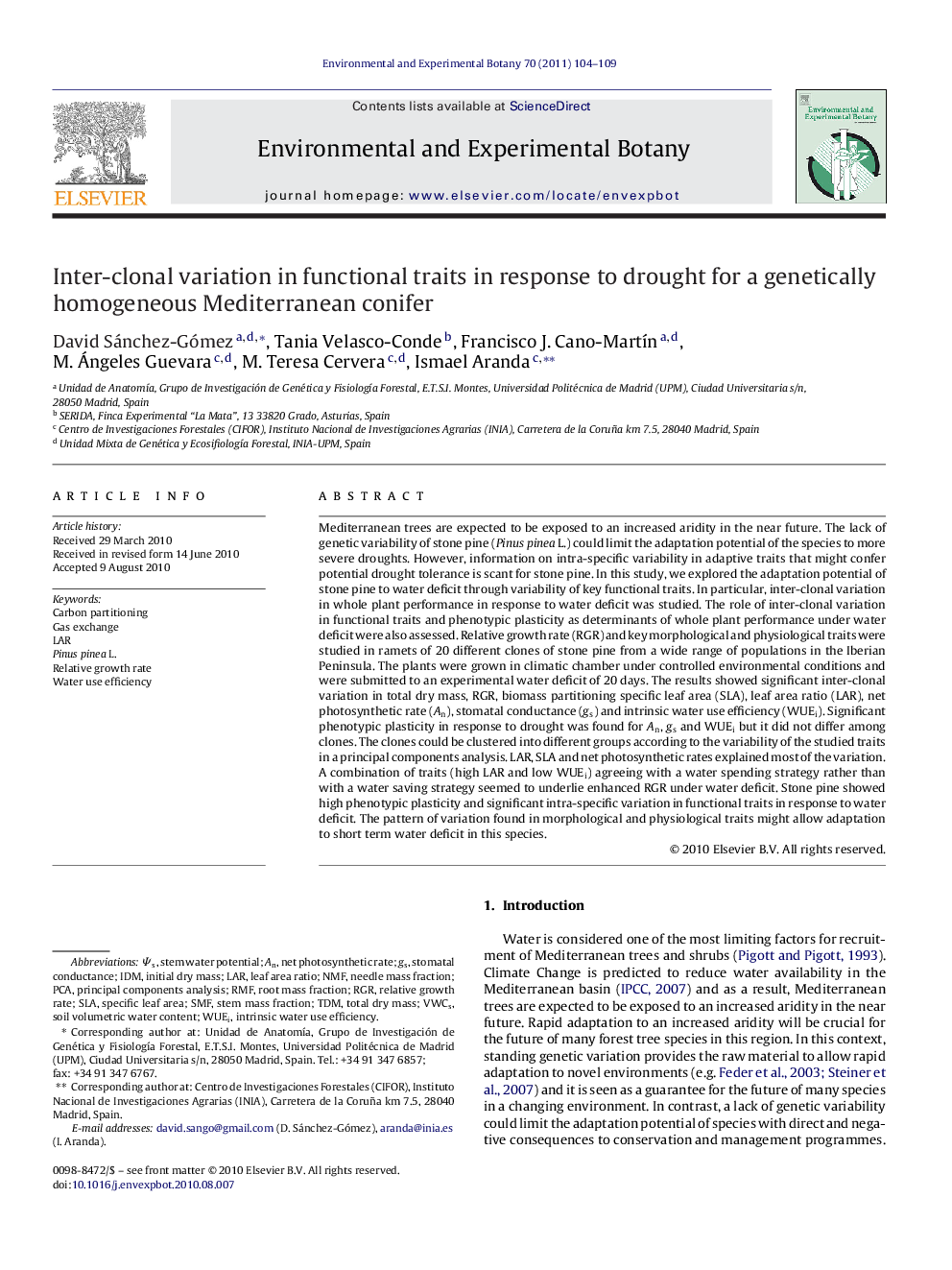| Article ID | Journal | Published Year | Pages | File Type |
|---|---|---|---|---|
| 4554920 | Environmental and Experimental Botany | 2011 | 6 Pages |
Mediterranean trees are expected to be exposed to an increased aridity in the near future. The lack of genetic variability of stone pine (Pinus pinea L.) could limit the adaptation potential of the species to more severe droughts. However, information on intra-specific variability in adaptive traits that might confer potential drought tolerance is scant for stone pine. In this study, we explored the adaptation potential of stone pine to water deficit through variability of key functional traits. In particular, inter-clonal variation in whole plant performance in response to water deficit was studied. The role of inter-clonal variation in functional traits and phenotypic plasticity as determinants of whole plant performance under water deficit were also assessed. Relative growth rate (RGR) and key morphological and physiological traits were studied in ramets of 20 different clones of stone pine from a wide range of populations in the Iberian Peninsula. The plants were grown in climatic chamber under controlled environmental conditions and were submitted to an experimental water deficit of 20 days. The results showed significant inter-clonal variation in total dry mass, RGR, biomass partitioning specific leaf area (SLA), leaf area ratio (LAR), net photosynthetic rate (An), stomatal conductance (gs) and intrinsic water use efficiency (WUEi). Significant phenotypic plasticity in response to drought was found for An, gs and WUEi but it did not differ among clones. The clones could be clustered into different groups according to the variability of the studied traits in a principal components analysis. LAR, SLA and net photosynthetic rates explained most of the variation. A combination of traits (high LAR and low WUEi) agreeing with a water spending strategy rather than with a water saving strategy seemed to underlie enhanced RGR under water deficit. Stone pine showed high phenotypic plasticity and significant intra-specific variation in functional traits in response to water deficit. The pattern of variation found in morphological and physiological traits might allow adaptation to short term water deficit in this species.
Research highlights▶ Stone pine showed high plasticity to drought. ▶ Stone pine showed variability in adaptive traits in response to drought. ▶ Interclonal variation in response to drought conformed to a water use strategy. ▶ Results suggest adaptation potential to short term water deficit in the species.
